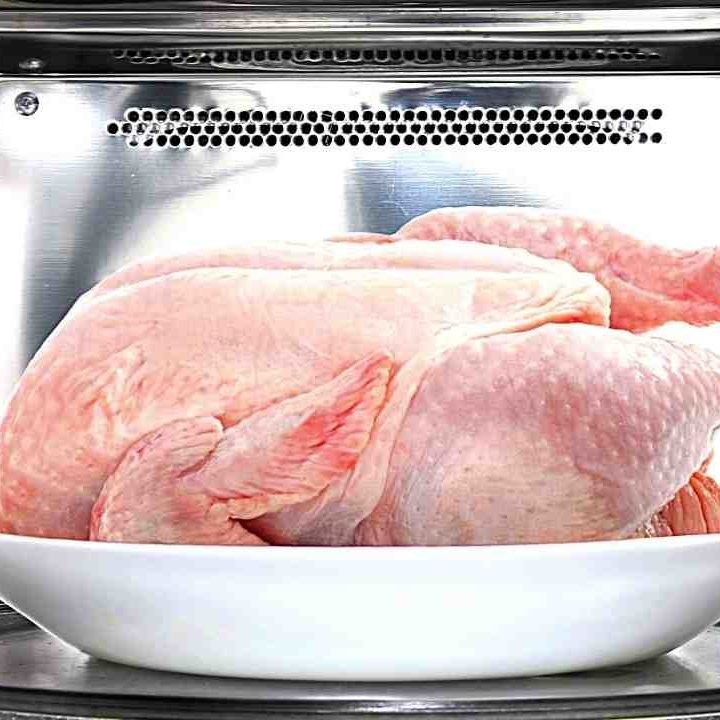Defrosting chicken can often feel like a daunting task, especially when you’re pressed for time. One moment you may have planned on a leisurely dinner, and the next, you’re realizing that your chicken is still frozen solid. Fortunately, defrosting chicken fast in the microwave is an effective method that can save the day. This article delves into the intricacies of the microwave defrosting process, safety guidelines, and tips to ensure your chicken is not only defrosted but also remains fresh and safe for cooking.
Understanding the Microwave Defrosting Process
Microwaves work by emitting waves that agitate water molecules in food, generating heat. This technology is what allows the microwave to defrost food quickly. However, knowing the appropriate settings and techniques is crucial to ensure that the chicken is defrosted evenly and safely.
Why Choose the Microwave?
There are several benefits to defrosting chicken in the microwave:
- Speed: Microwaving is one of the quickest methods, allowing you to go from frozen to ready-to-cook in mere minutes.
- Convenience: In a busy life, having a fast option for defrosting is invaluable, especially during last-minute meal preparations.
- Less Mess: Compared to other methods like leaving chicken in water or using the refrigerator, the microwave ensures a cleaner process with minimal dishes.
Types of Chicken to Defrost
Before you start, it’s essential to understand the specifics of the chicken you intend to defrost:
- Whole Chickens: Larger and take longer to defrost compared to smaller cuts. An entire bird may require more attention during the process.
- Chicken Breasts: Typically the fastest to defrost due to their smaller size and thinner profile.
- Chicken Thighs and Legs: These cuts can vary in thickness, affecting defrost times.
- Ground Chicken: This typically thaws faster due to its lower density, but it requires careful attention to prevent cooking during defrosting.
Safety Precautions When Defrosting Chicken
Understanding how to defrost chicken fast in the microwave involves more than just pressing the buttons. It’s equally important to be aware of food safety guidelines to prevent any risks of foodborne illness.
The Danger Zone
Bacteria grow at temperatures between 40°F and 140°F. When defrosting chicken, ensure that it never remains in this ‘danger zone’ for longer than necessary. This is where the microwave excels, as it defrosts chicken quickly, minimizing the risk of bacterial growth.
Using the Right Setting
Most microwaves come equipped with a “defrost” setting, which is tailored for thawing meat. However, it’s crucial to know how to adjust your microwave’s power settings effectively:
- Power Settings: If your microwave doesn’t have a specific defrost function, set it to about 30% power. Lower power helps ensure that the exterior of the chicken doesn’t cook while the interior remains frozen.
Regularly Check Your Chicken
Defrosting chicken in the microwave requires diligence. It’s essential to check the chicken frequently to ensure even thawing. Rotate or flip the chicken halfway through the defrosting time to ensure uniform thawing and prevent cooking.
Step-by-Step Guide to Defrost Chicken in the Microwave
Now that we’ve covered the basics, let’s walk through a streamlined process to effectively defrost chicken in the microwave.
Step 1: Prepare the Chicken
- Remove Packaging: Take the chicken out of its packaging. If it’s in a Styrofoam tray, use caution as many trays can melt in the microwave.
- Place in a Microwave-Safe Dish: Use a shallow microwave-safe dish to catch any drippings or moisture released during the thawing process.
Step 2: Set the Microwave
- Select the Right Function: If available, choose the ‘defrost’ function on your microwave. If your microwave lacks this feature, set the power to 30%.
- Input Weight: If your microwave allows, input the weight of the chicken. This will help the microwave determine the appropriate defrosting time.
Step 3: Monitor the Time
- Start with Short Intervals: Begin with 3 to 5-minute intervals, especially for larger cuts. Rotate the chicken often, aiming for an even defrost.
- Check the Temperature: Use a food thermometer if available. The internal temperature should remain below 40°F.
Step 4: Final Checks
- Examine the Chicken: After the intervals, check if the chicken has defrosted entirely. You want it to be pliable but not to have any cooked areas.
- Use Immediately: Once defrosted, cook the chicken immediately to ensure freshness and safety.
Common Mistakes to Avoid
While the microwave is a terrific tool for defrosting chicken, common mistakes can lead to undesirable outcomes.
Not Removing Packaging
Leaving the chicken in its original packaging can be hazardous. Styrofoam can catch fire, and plastic wrap may not be microwave-safe.
Overcooking the Chicken
It’s easy to inadvertently start cooking chicken at a higher power setting. Always err on the side of caution: low and slow is your best bet.
Overlooking the Need for Prompt Cooking
Once defrosted, chicken should be cooked immediately. If it sits out at room temperature for extended periods, you’re risking the growth of harmful bacteria.
Additional Tips for Effective Defrosting
To master how to defrost chicken fast in the microwave, equip yourself with a few additional tips and tricks to streamline the process.
Cut Into Smaller Pieces
If you’re short on time, consider cutting larger pieces into smaller sections before defrosting. Smaller pieces will thaw much faster and evenly.
Use the Time Wisely
While the microwave does most of the heavy lifting, use the waiting time productively. Prepare sides like vegetables or salads while you’re waiting for the chicken to thaw.
Plan for Future Meals
To lessen the urgency of thawing chicken, think ahead. Plan meals for the week and remove the chicken from the freezer a day prior to cooking, allowing it to thaw safely in the fridge overnight.
Consider Other Thawing Methods
Although the microwave is incredibly effective, it might not always be necessary. You can alternatively use cold water thawing (keeping chicken in a sealed bag under cold running water) for quick thawing while keeping your chicken safe.
Keep the Microwave Clean
Regularly cleaning your microwave is essential not just for hygiene but also for maintaining its efficiency. Any spills or food particles can affect the microwave’s ability to cook or defrost evenly.
Look for Defrosting Resources
Various apps and websites offer tailored defrosting times and methods based on the type of meat you’re working with. Keep these resources handy for future chicken defrosting.
 Cooking your Chicken Post-Defrosting
Cooking your Chicken Post-Defrosting
Once you’ve successfully defrosted your chicken, the next step is cooking it. Cooking chicken thoroughly is crucial for safety, flavor, and texture.
Cooking Temperatures
Your chicken needs to reach an internal temperature of 165°F for safe consumption. A food thermometer is a handy tool to ensure safety.
Cooking Methods
Whether grilling, baking, sautéing, or slow-cooking, the defrosted chicken can be incorporated into numerous meals. Consider marinating or seasoning before cooking for added flavor.
Utilizing Leftovers
If you cook more than you need, cooked chicken can be stored in the fridge for up to 3-4 days. It can also be frozen again, but make sure to do so promptly after cooking to maintain quality.
Conclusion
Learning how to defrost chicken fast in the microwave can be a game changer in your kitchen. It not only saves time but also provides a safe and effective way to enjoy your meals without the stress of preparing frozen ingredients. With the right knowledge and practices, defrosting chicken can fit seamlessly into your culinary preparations. Whether you’re whipping up a quick dinner or planning for the week ahead, understanding the microwave defrosting process empowers you to navigate your cooking tasks effortlessly. So the next time you’re in a pinch, remember that the microwave is your ally in defrosting chicken efficiently and effectively!



